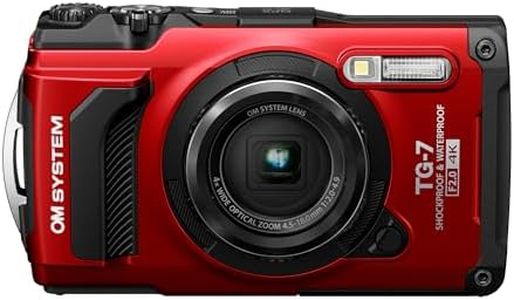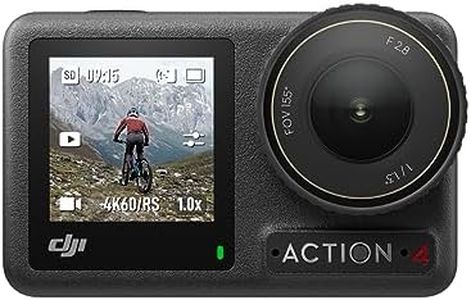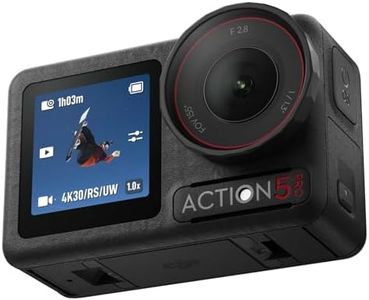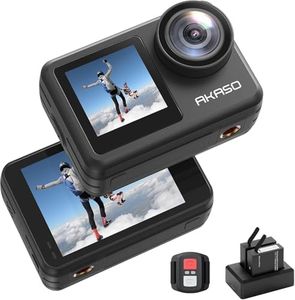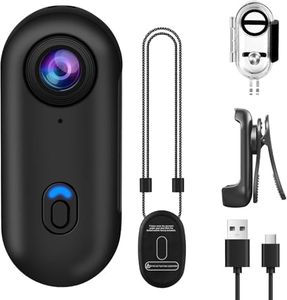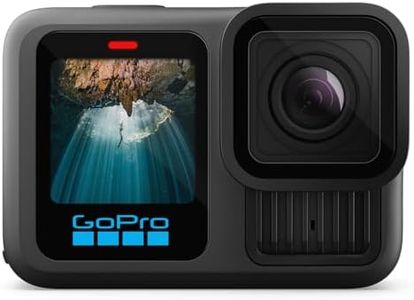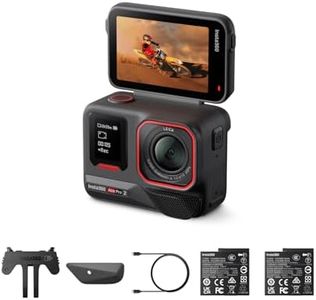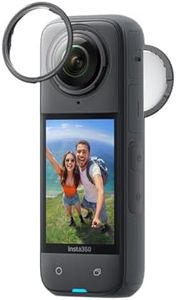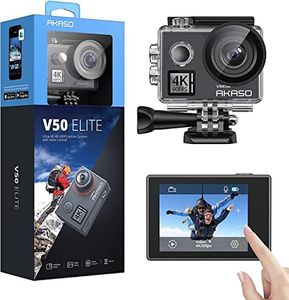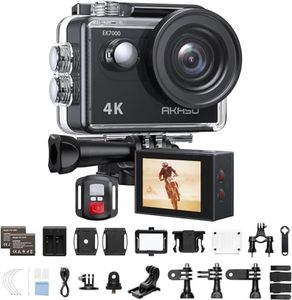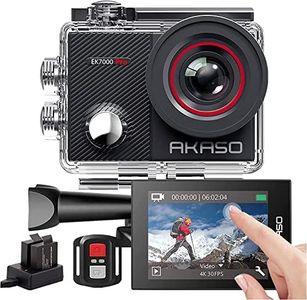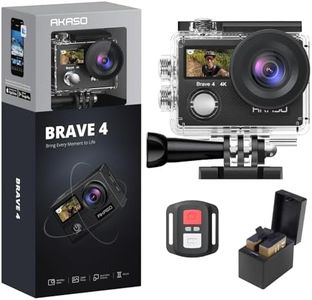We Use CookiesWe use cookies to enhance the security, performance,
functionality and for analytical and promotional activities. By continuing to browse this site you
are agreeing to our privacy policy
10 Best Action Cameras
From leading brands and best sellers available on the web.Buying Guide for the Best Action Cameras
Choosing the right action camera can greatly improve how you capture your adventures, whether it’s for extreme sports, travel, or simply recording everyday moments. Action cameras are designed to be durable, portable, and capable of capturing high-quality video and photos in a variety of environments. To find the best fit for you, focus on your primary use cases — think about where and how you'll use the camera, and what features matter most for your activities.Video ResolutionVideo resolution refers to the number of pixels a camera uses to record video. Higher resolution means clearer, sharper images, which is important if you want detailed footage or plan to display videos on large screens. The most common options are 1080p (Full HD), 1440p, 2.7K, and 4K. While 1080p is generally good for casual use and online sharing, 4K is ideal for those who want the highest detail and future-proof content. If you only record for social media or small screens, 1080p may be sufficient, but if quality and editing flexibility matter, consider higher resolutions.
Frame RateFrame rate measures how many frames per second (fps) a camera can record. Higher frame rates result in smoother motion—especially useful for fast action or slow-motion footage. Typical choices are 30fps, 60fps, or 120fps. For regular activities, 30fps or 60fps work well, but if you plan to shoot high-speed sports or want to create slow-motion clips, look for options that offer at least 120fps. Match the frame rate to the type of action you want to capture and whether you value smooth motion or cinematic slow-downs.
Image StabilizationImage stabilization helps reduce shakiness in your videos, which is crucial for handheld shooting or when using the camera during activities like biking or running. There are electronic and optical stabilization methods. Cameras with basic stabilization are fine for still or gentle movement, but for dynamic sports or handheld shooting without extra gear, advanced stabilization will give you much smoother results. Choose stronger stabilization if you anticipate lots of movement during filming.
Waterproofing and DurabilityAction cameras often face tough conditions, so their ability to resist water, dust, and shocks is important. Some cameras are waterproof without any extra case, while others need an external housing to survive underwater or rough treatment. If your activities include swimming, diving, or use in rain or snow, check the waterproof depth rating and how easy it is to seal or armor the camera. More durable or waterproof designs are best for adventure sports, while basic protection might be enough for casual use.
Battery LifeBattery life tells you how long you can record before needing a recharge. Video resolution, frame rate, and special features often reduce total run time. Shorter battery life is common in small cameras, so consider how long your typical activities last. If you’re on short outings, most models will suffice, but for all-day adventures or remote travel, look for longer battery life or the ability to swap batteries quickly.
Mounting Options and AccessoriesMounting options determine how easily you can attach the camera to helmets, bikes, surfboards, or your body. Popular cameras offer many accessories and mounts for different activities. If you have specific uses in mind—like mounting the camera on a drone, a helmet, or underwater—make sure compatible mounts are available. The more diverse the mounting choices, the easier it is to adapt the camera to your unique needs.
Field of View (FOV)Field of View is how wide an area the camera can record, usually measured in degrees. A wide FOV captures more of the action but can sometimes cause a fisheye effect, while a narrower FOV focuses more on a specific subject with less distortion. If you want to record immersive scenes or group activities, a wider FOV is better. For more focused, less distorted content, consider a medium or narrow FOV if the camera allows adjustment.
Ease of Use and ControlsHow easy it is to operate the camera can greatly affect your experience, especially during active or fast-paced situations. Look for simple button layouts, clear displays, or touchscreen controls if you prefer intuitive usage. If you’ll use the camera while wearing gloves or in wet conditions, larger buttons and simple menus become more important. Consider your comfort with technology and physical conditions where you’ll use the camera most.
Connectivity (Wi-Fi/Bluetooth/App Support)Connectivity options allow you to control the camera remotely or transfer files without a computer. Features like Wi-Fi, Bluetooth, and app support make it easy to preview, edit, or share footage directly from a smart device. If instant sharing or remote control is important for you—say, for social posts or group shots—make sure your camera has strong app integration and reliable wireless functions that fit your workflow.
